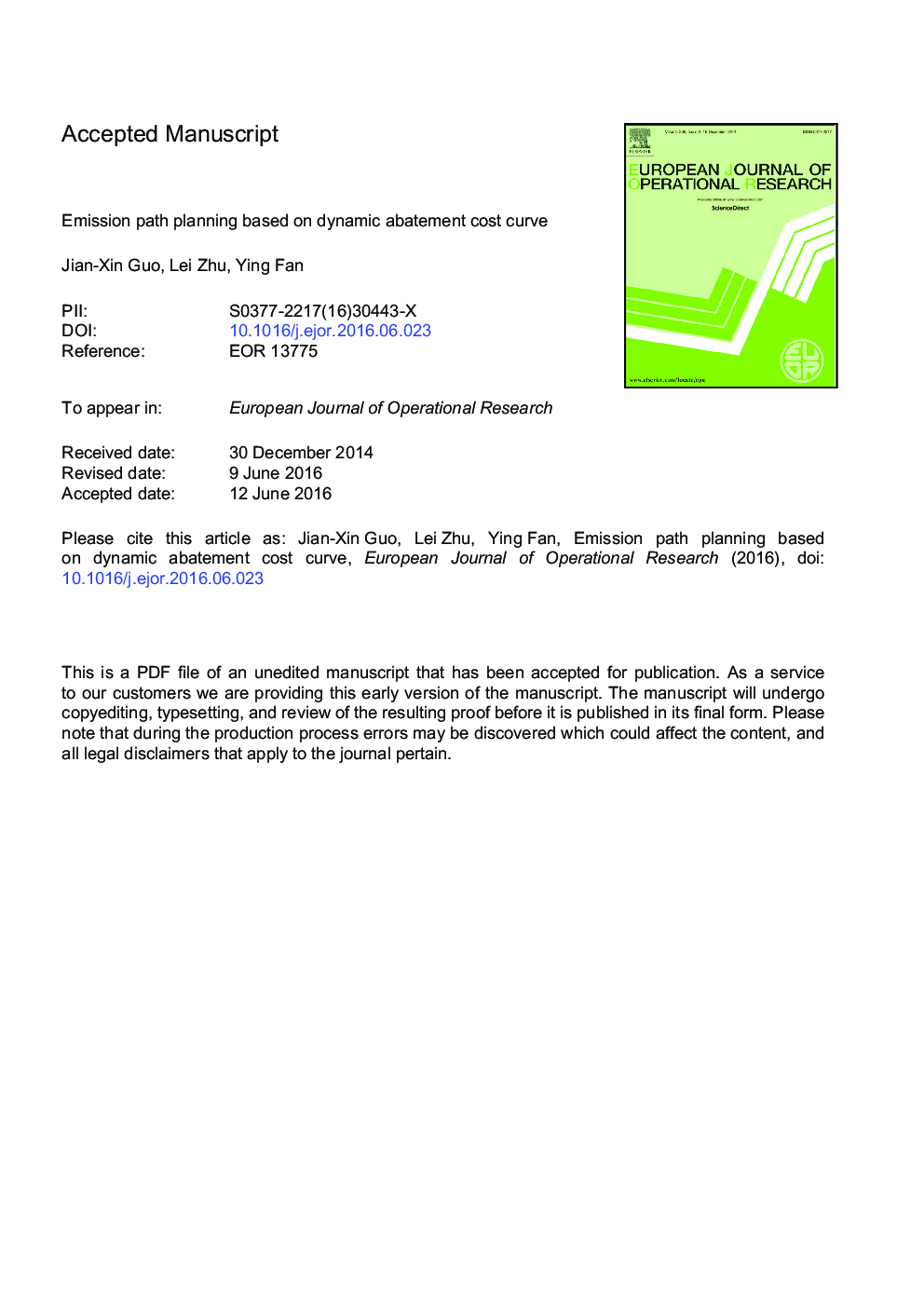| Article ID | Journal | Published Year | Pages | File Type |
|---|---|---|---|---|
| 4959830 | European Journal of Operational Research | 2016 | 43 Pages |
Abstract
Global climate change is one of the most serious environmental problems that has attracted an unprecedented global attention. The scientific community has recognized that human activity is mostly responsible for global climate warming. Therefore, states participating in the United Nations Framework Convention on Climate Change (UNFCCC) have initiated a series of negotiations on how to develop their own emission reduction targets. However, the realization of these targets is at the expense of economic development to a great extent. Therefore, an abatement plan is necessary to decide how and when to implement emission reduction targets. A marginal abatement cost curve (MACC), often used as an important quantitative tool to estimate abatement burden or evaluate abatement performance, should be considered carefully. In this paper, we enrich the traditional MACC by introducing the concept of an “immediate unit marginal abatement cost” to describe its intrinsic incremental abatement difficulty. This cost is proved to be agreed with the actual situation in many ways, and is therefore very suitable for practical use. Two-factor learning curve are considered in the model, which can go some way in improving the performance of the revised MACC. Using a parameterization method, the original problem can be converted into a tractable nonlinear programming problem. We use an algorithm to search for the approximate global optimal solution. The effectiveness and the efficiency of the algorithm are discussed respectively. In the results, we find that the abatement path distinguishes largely under different abatement targets. Some plausible reasons and policy advices are given.
Related Topics
Physical Sciences and Engineering
Computer Science
Computer Science (General)
Authors
Jian-Xin Guo, Lei Zhu, Ying Fan,
